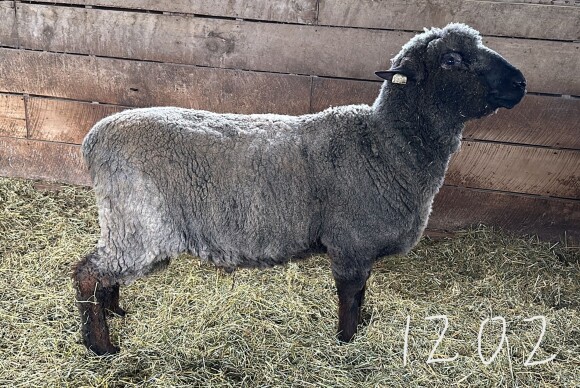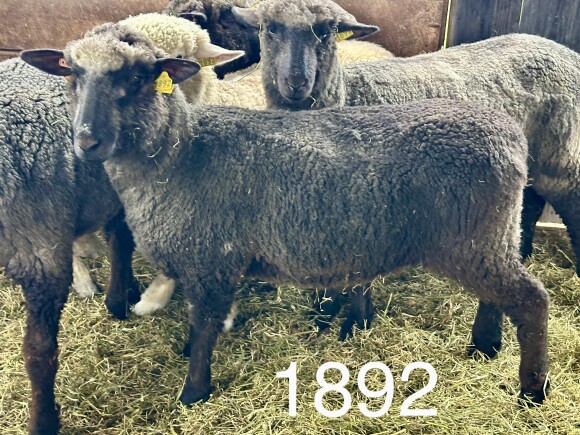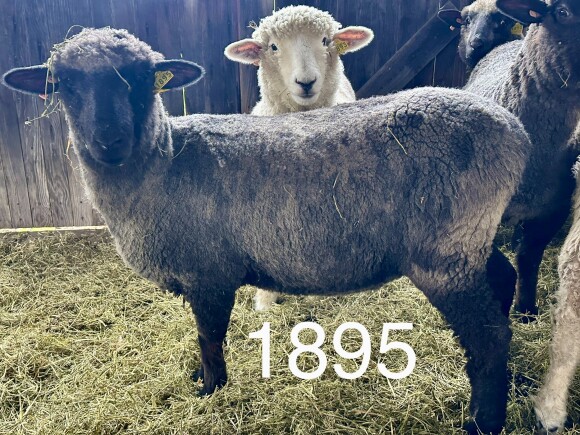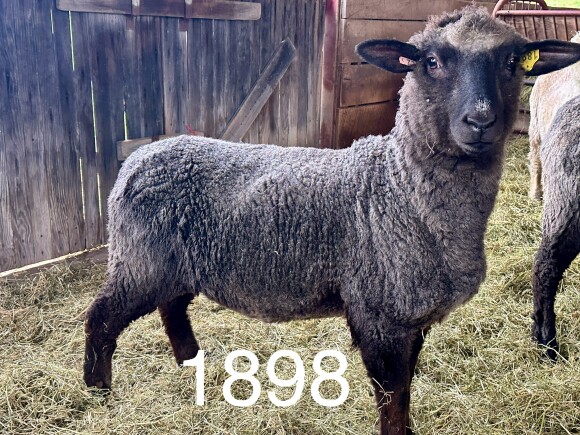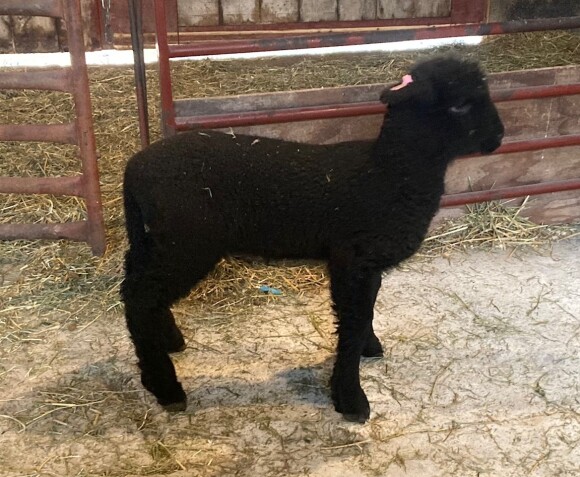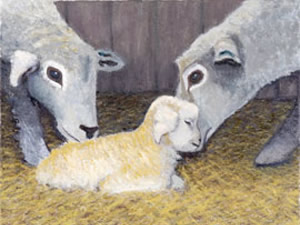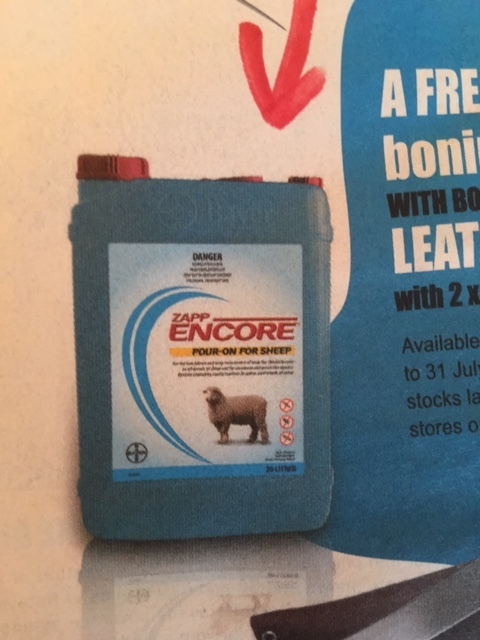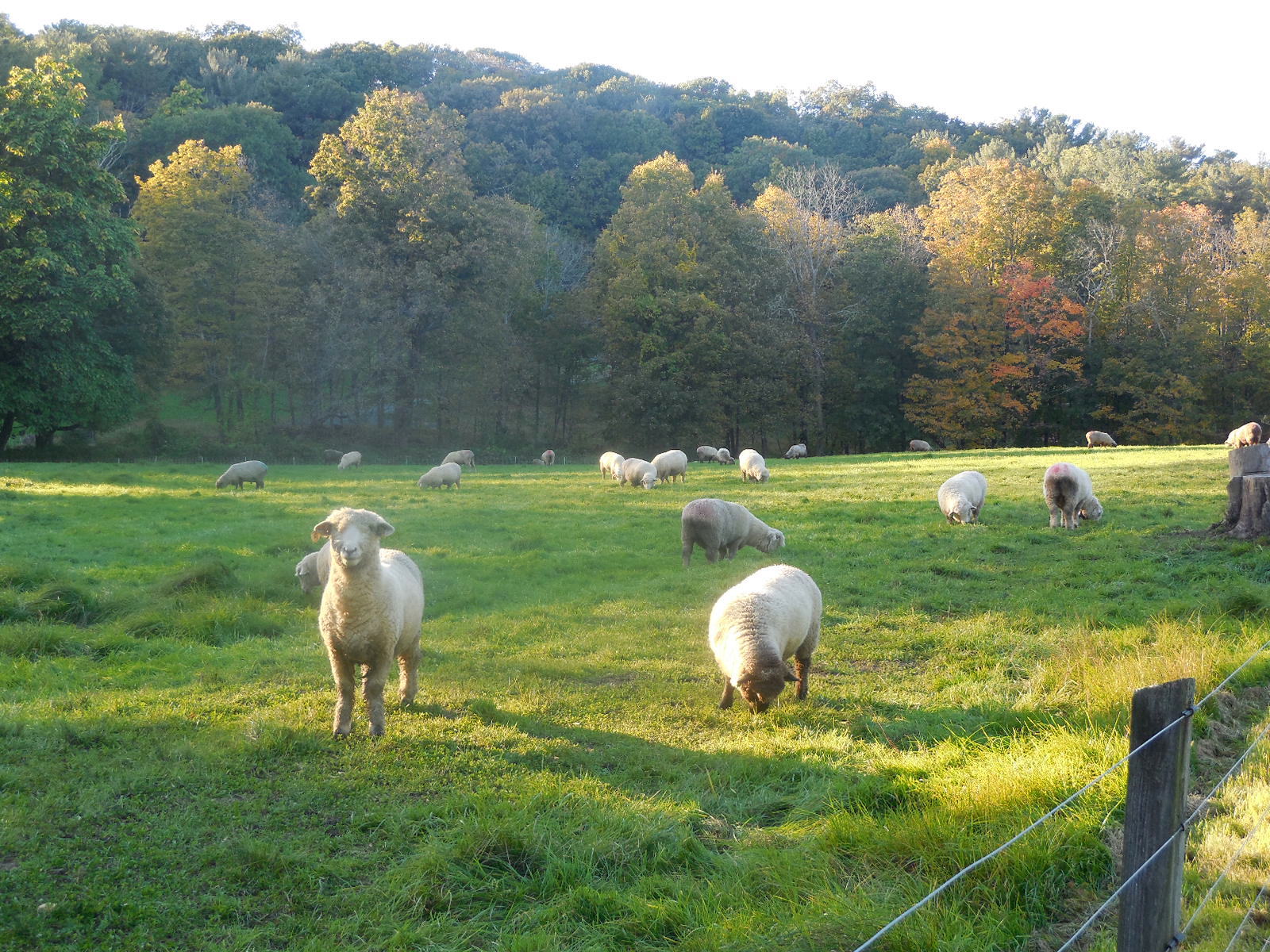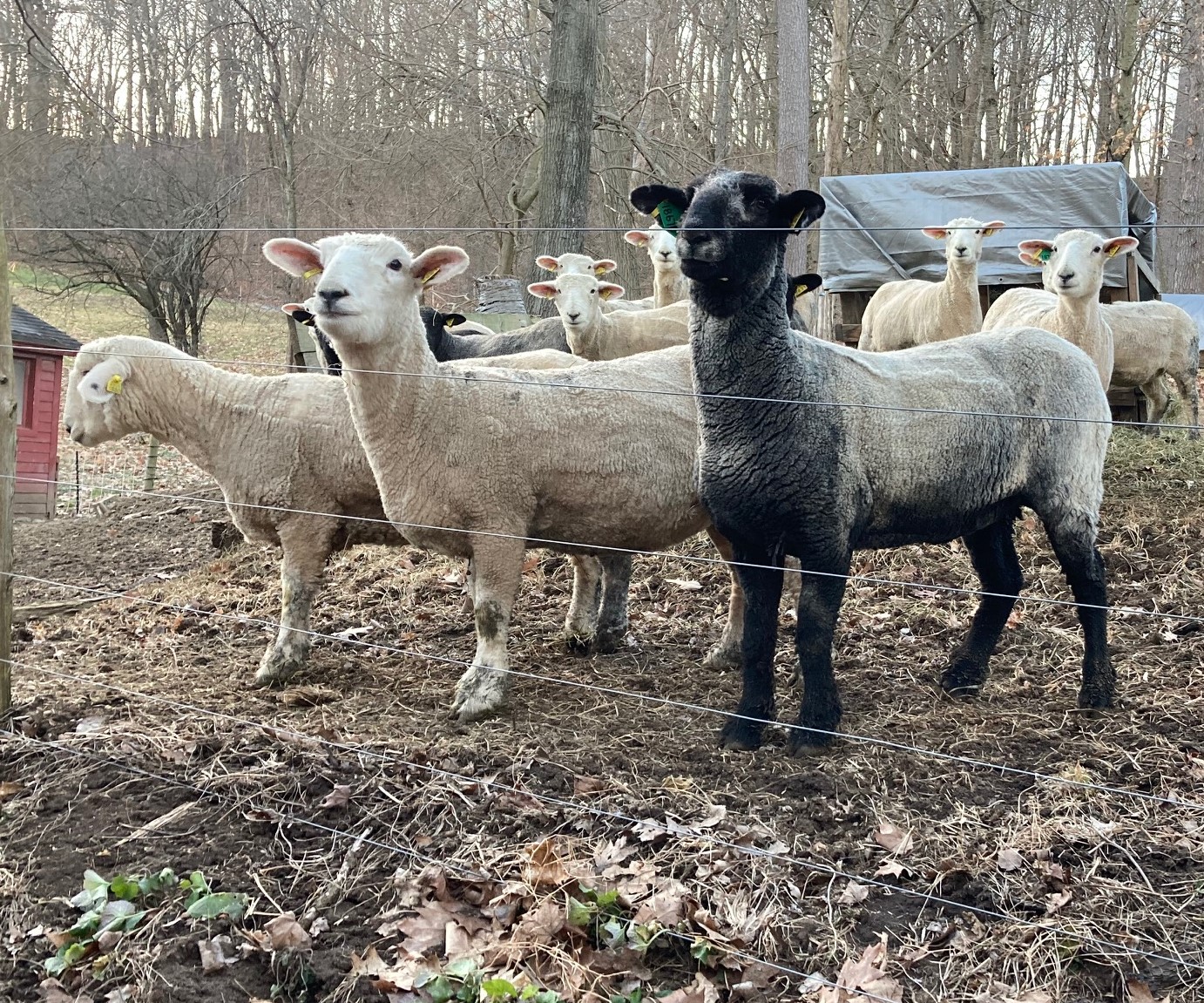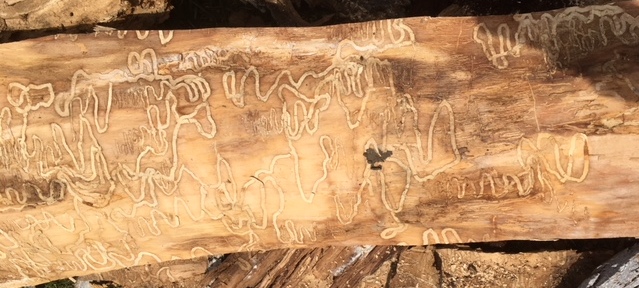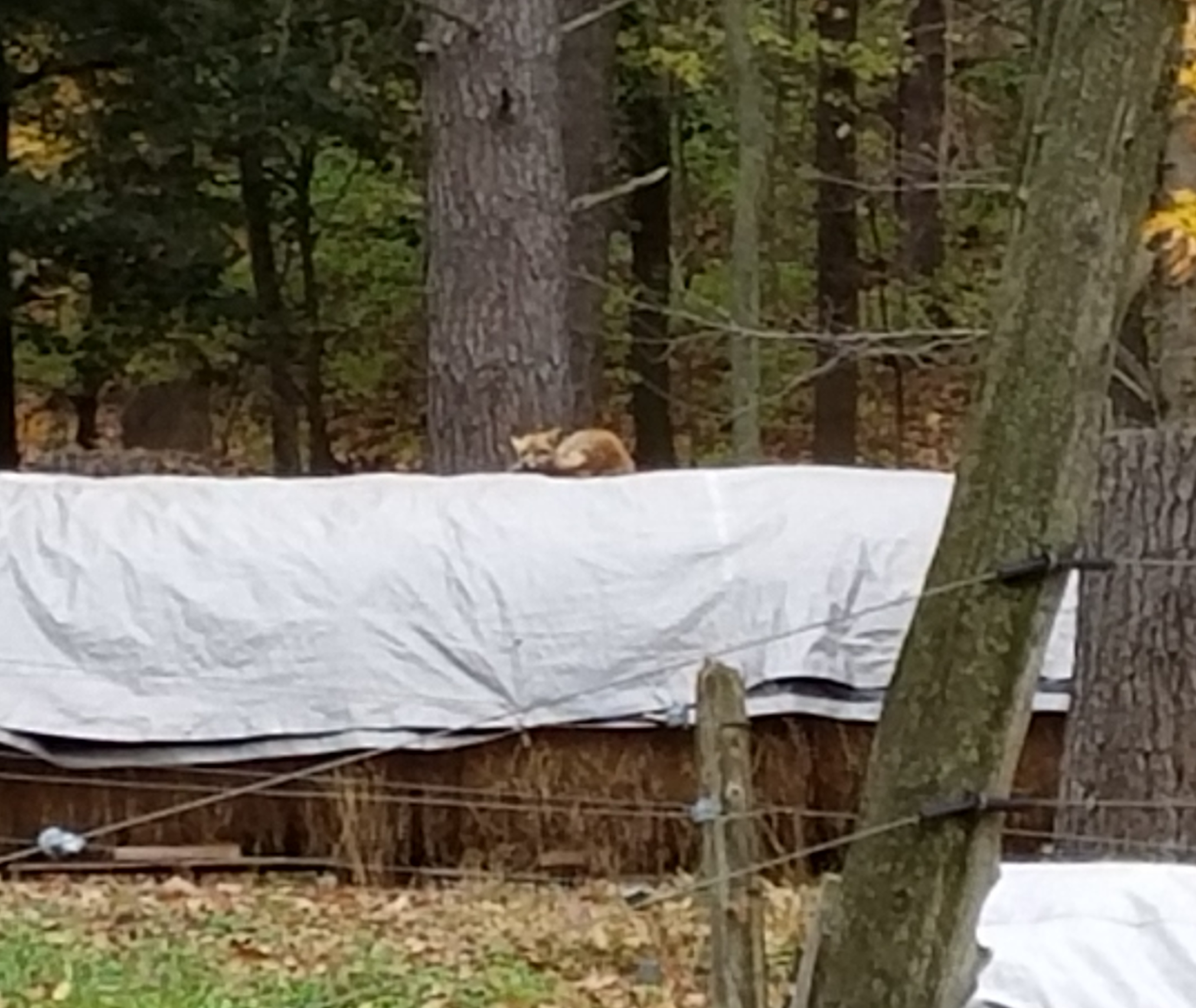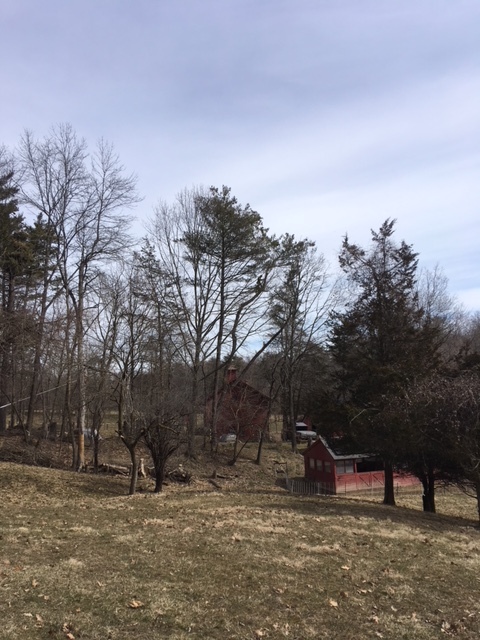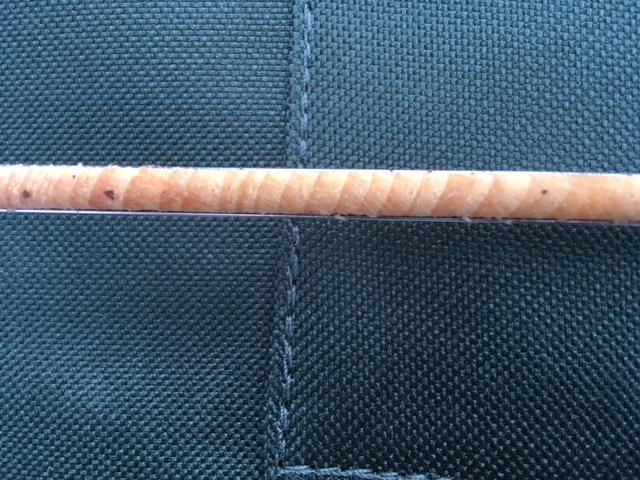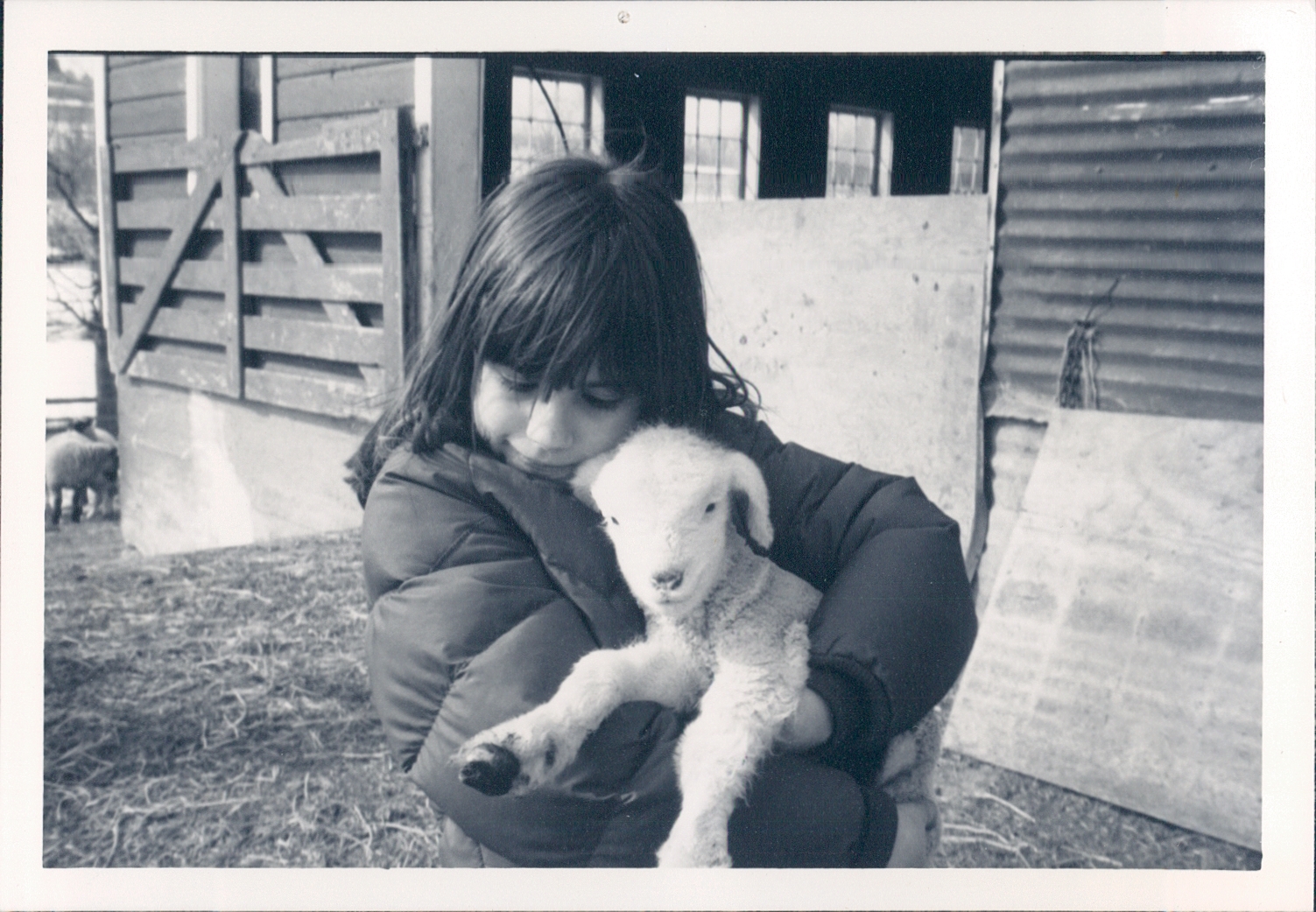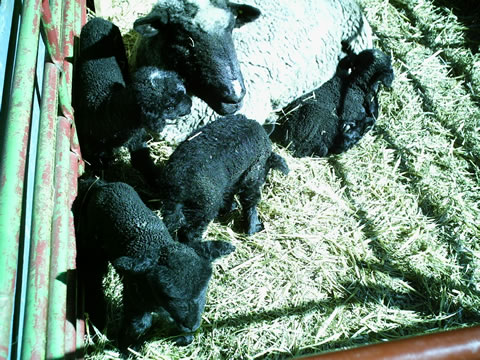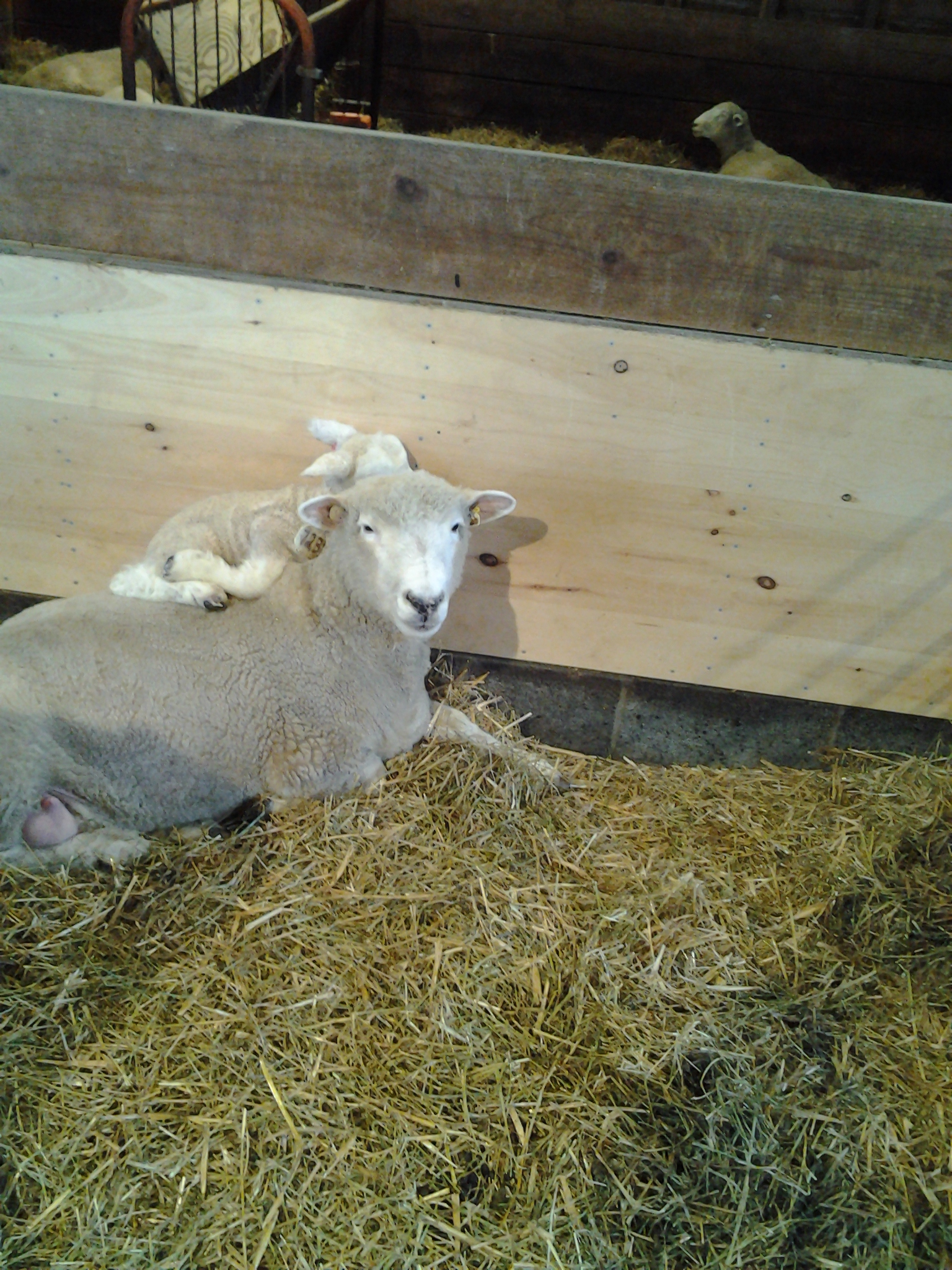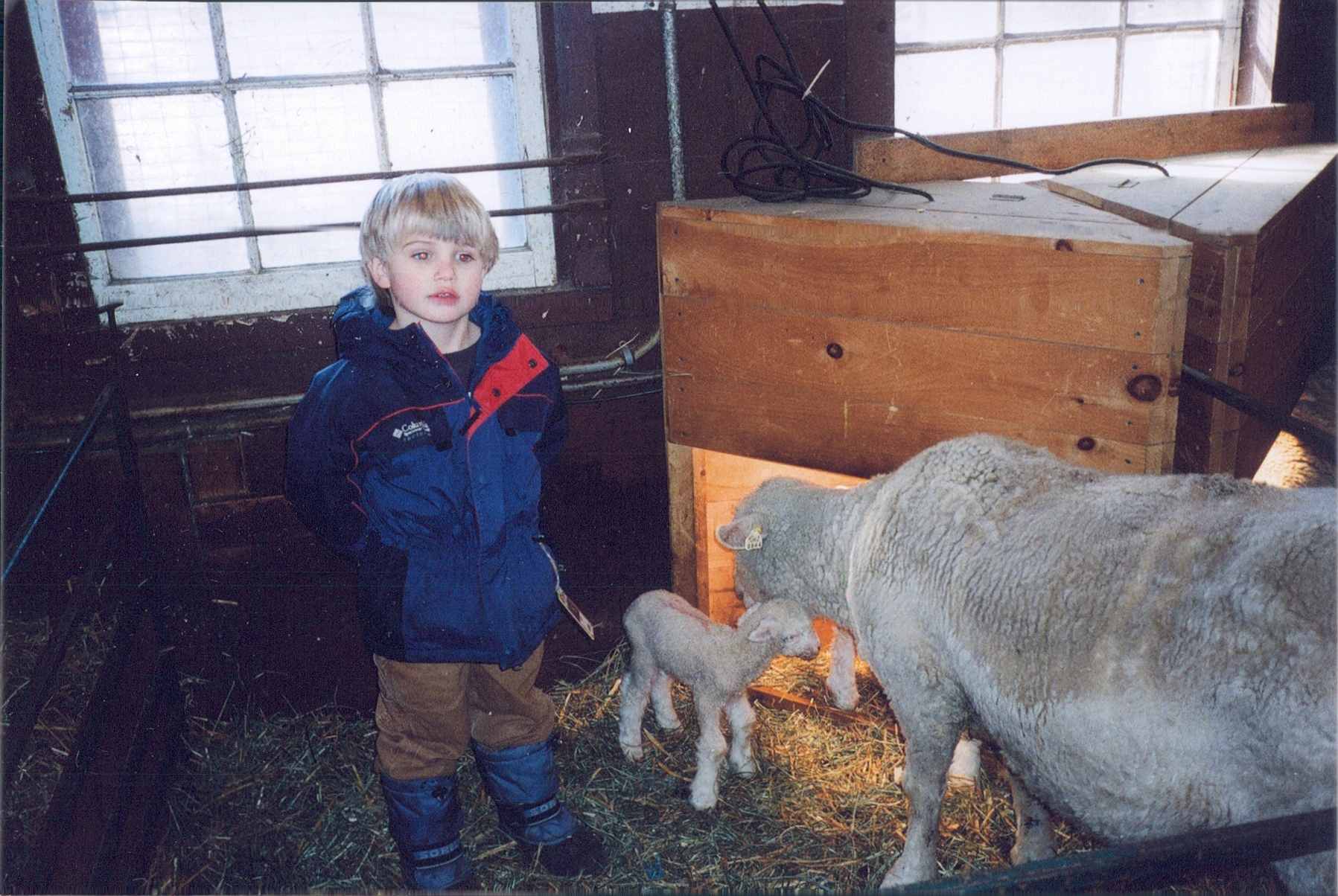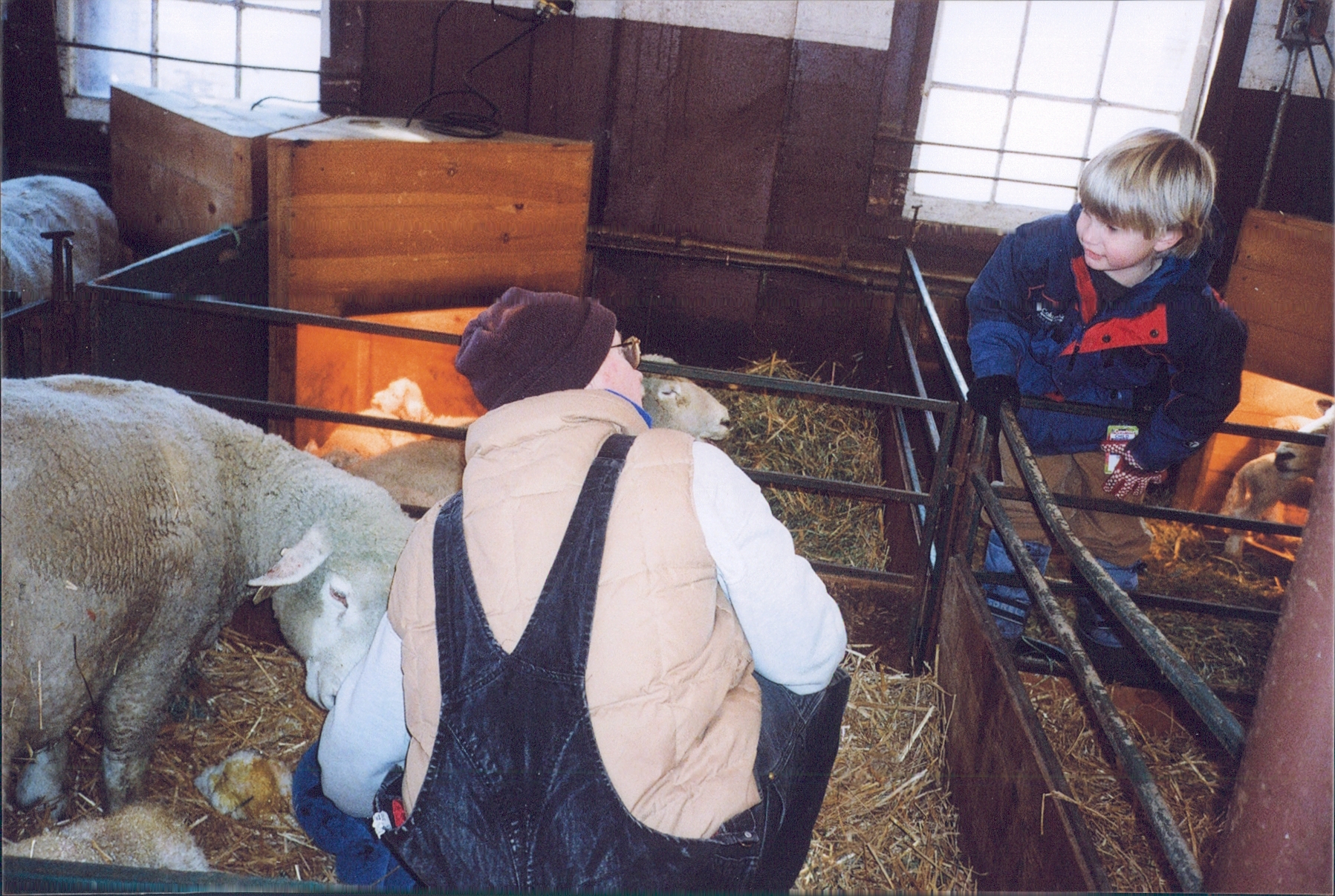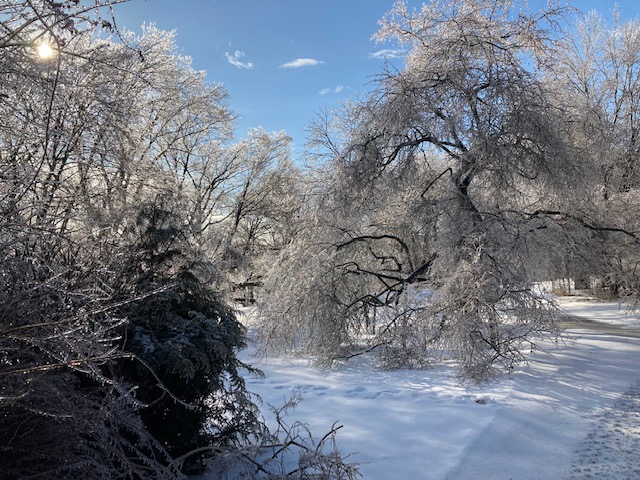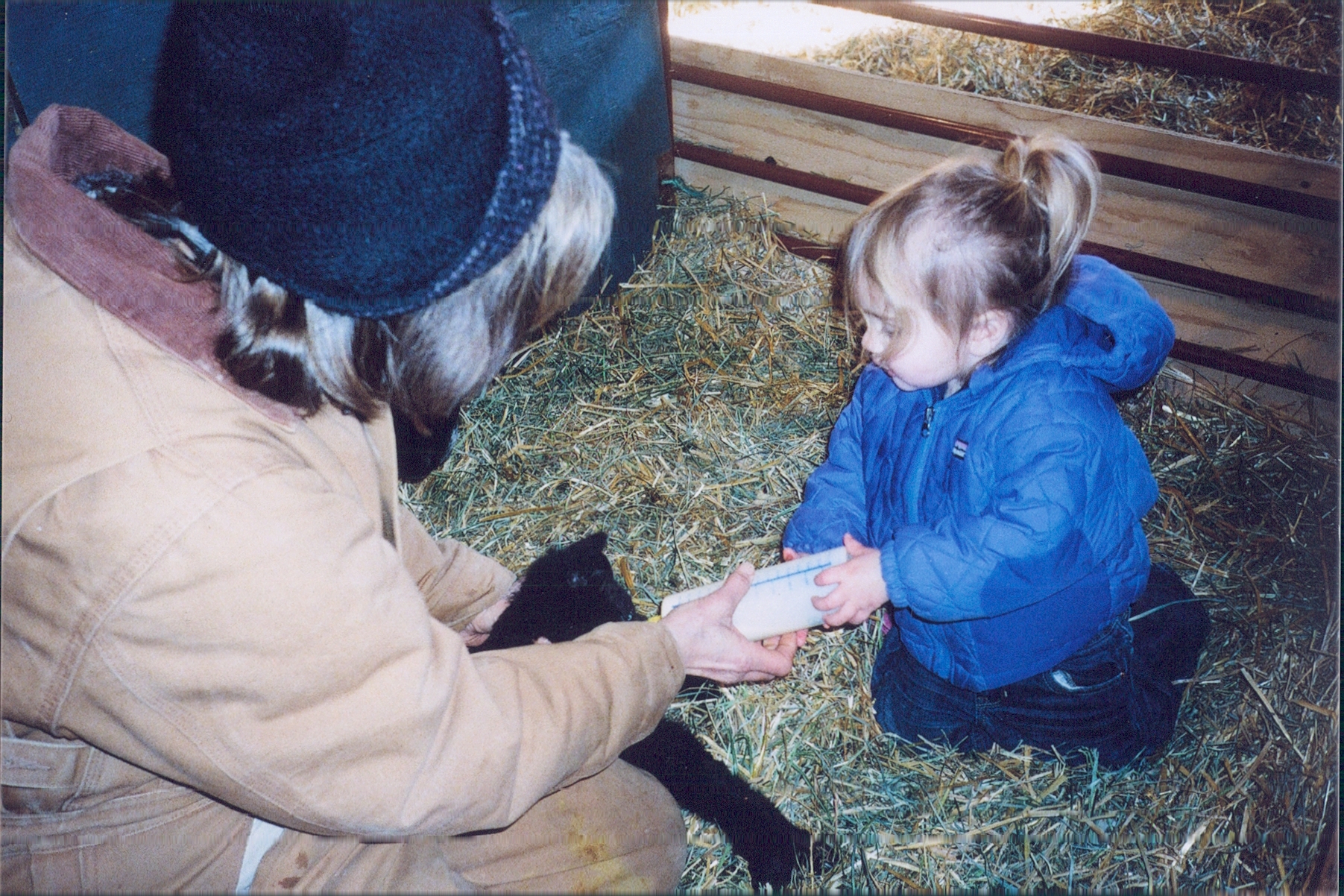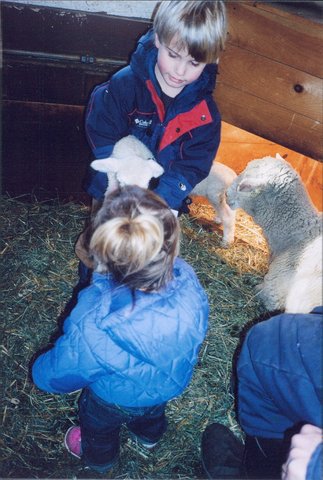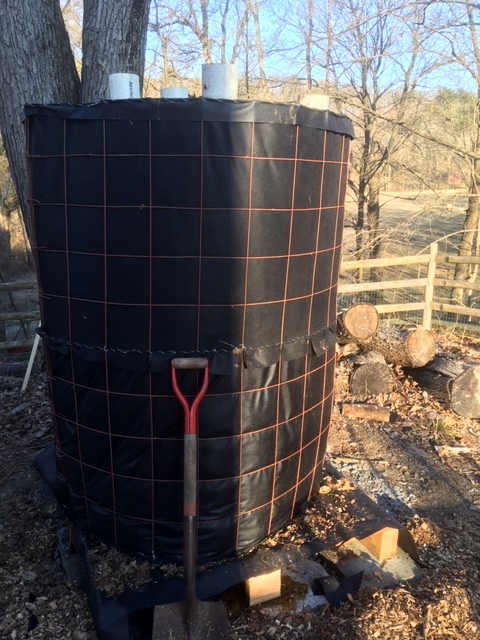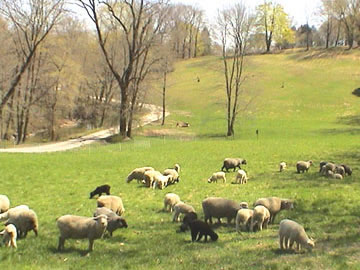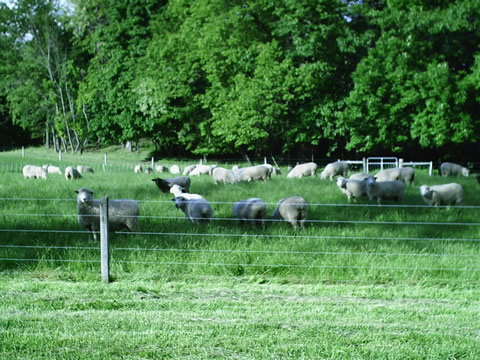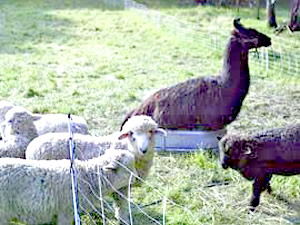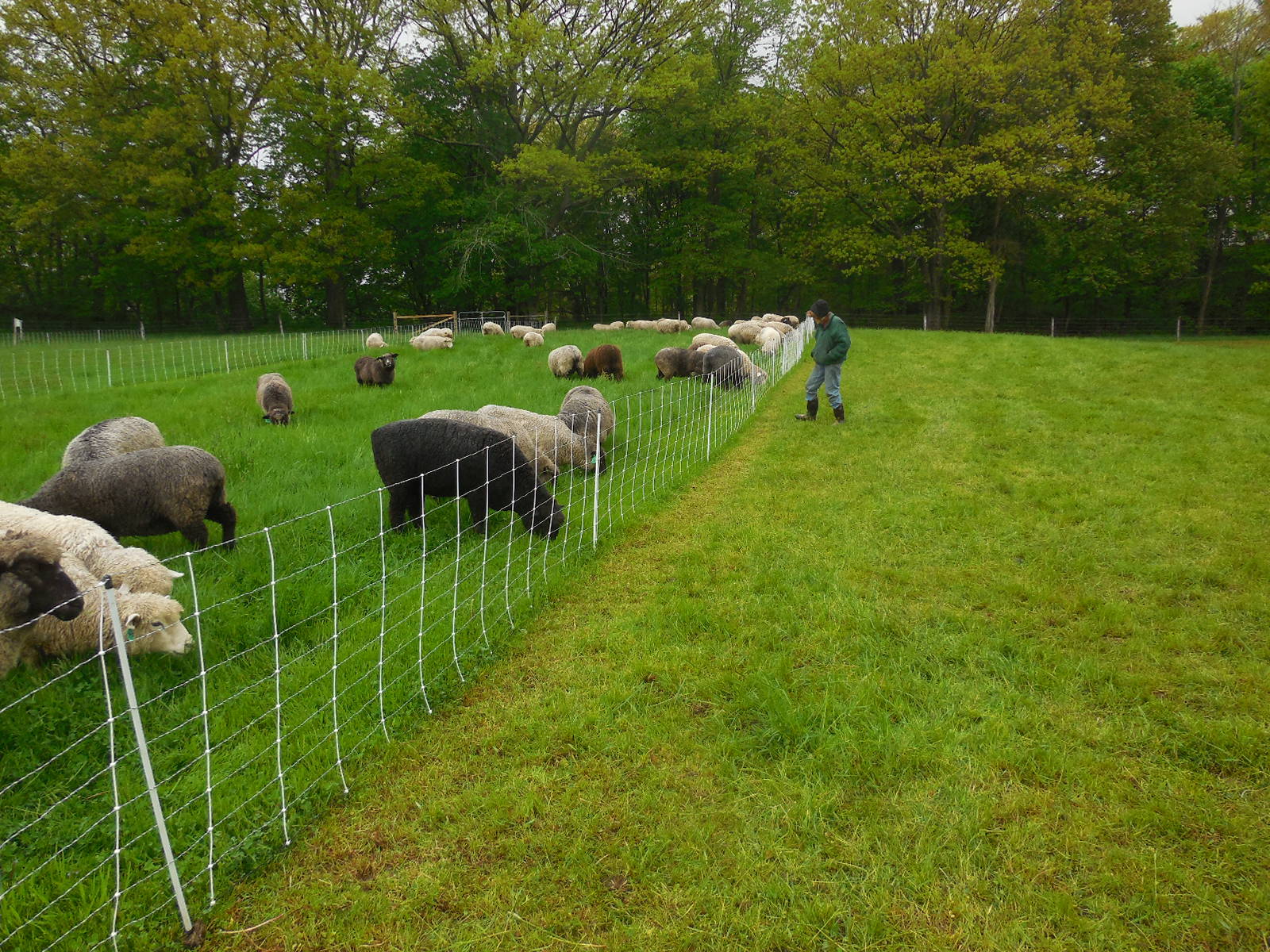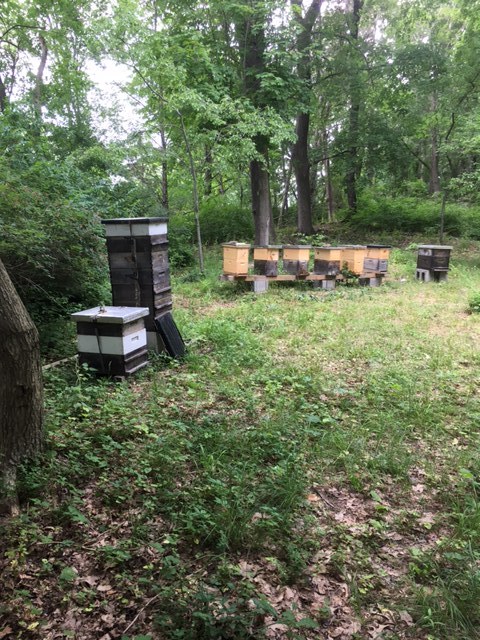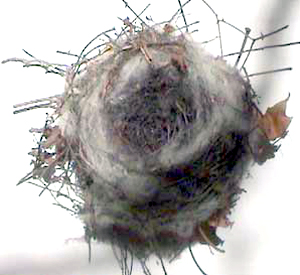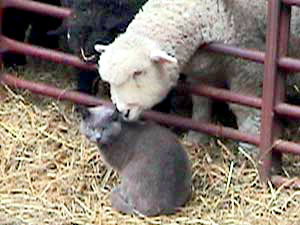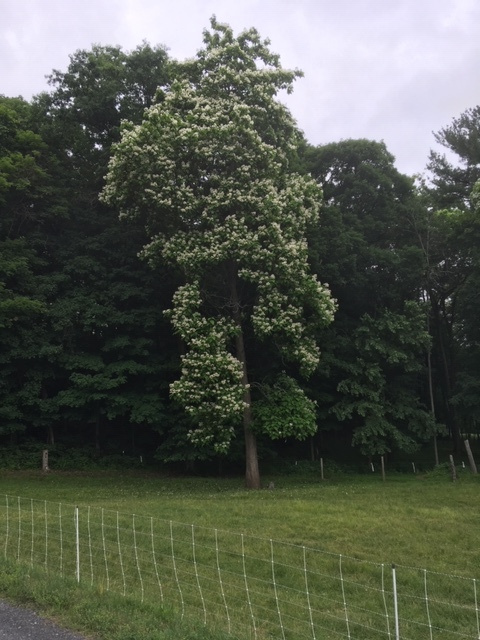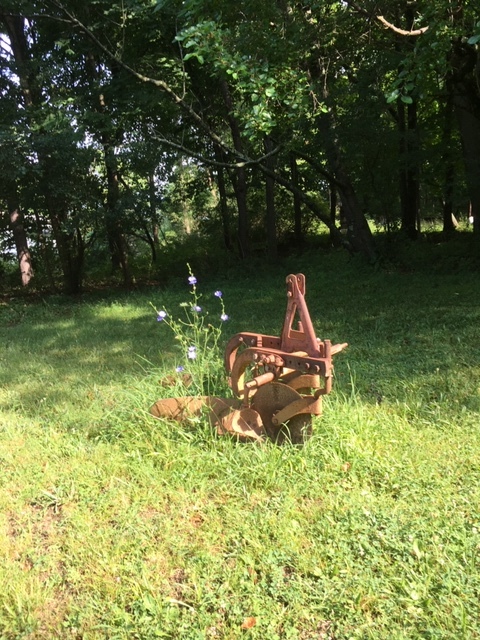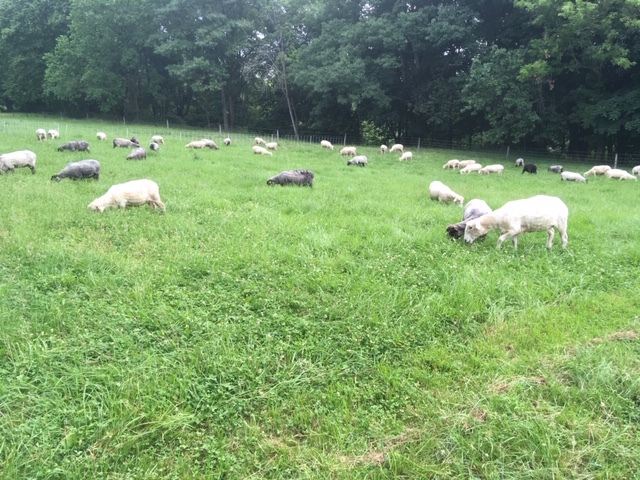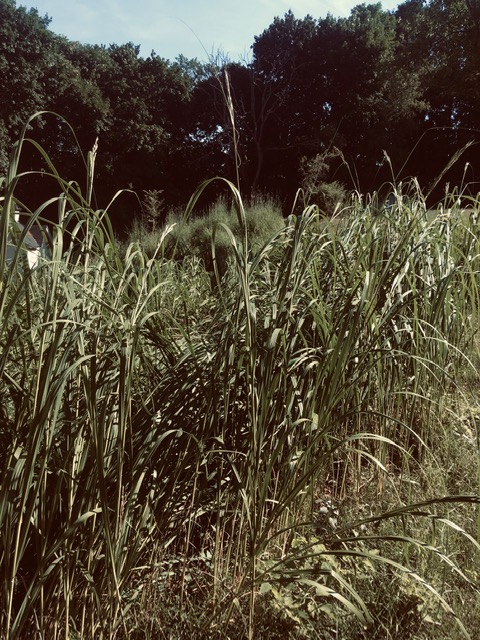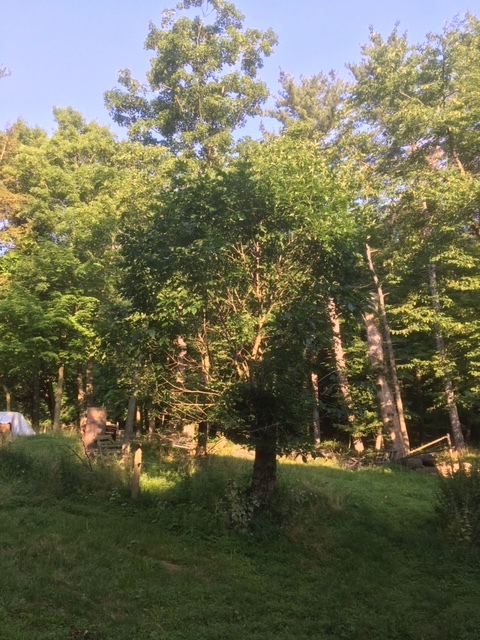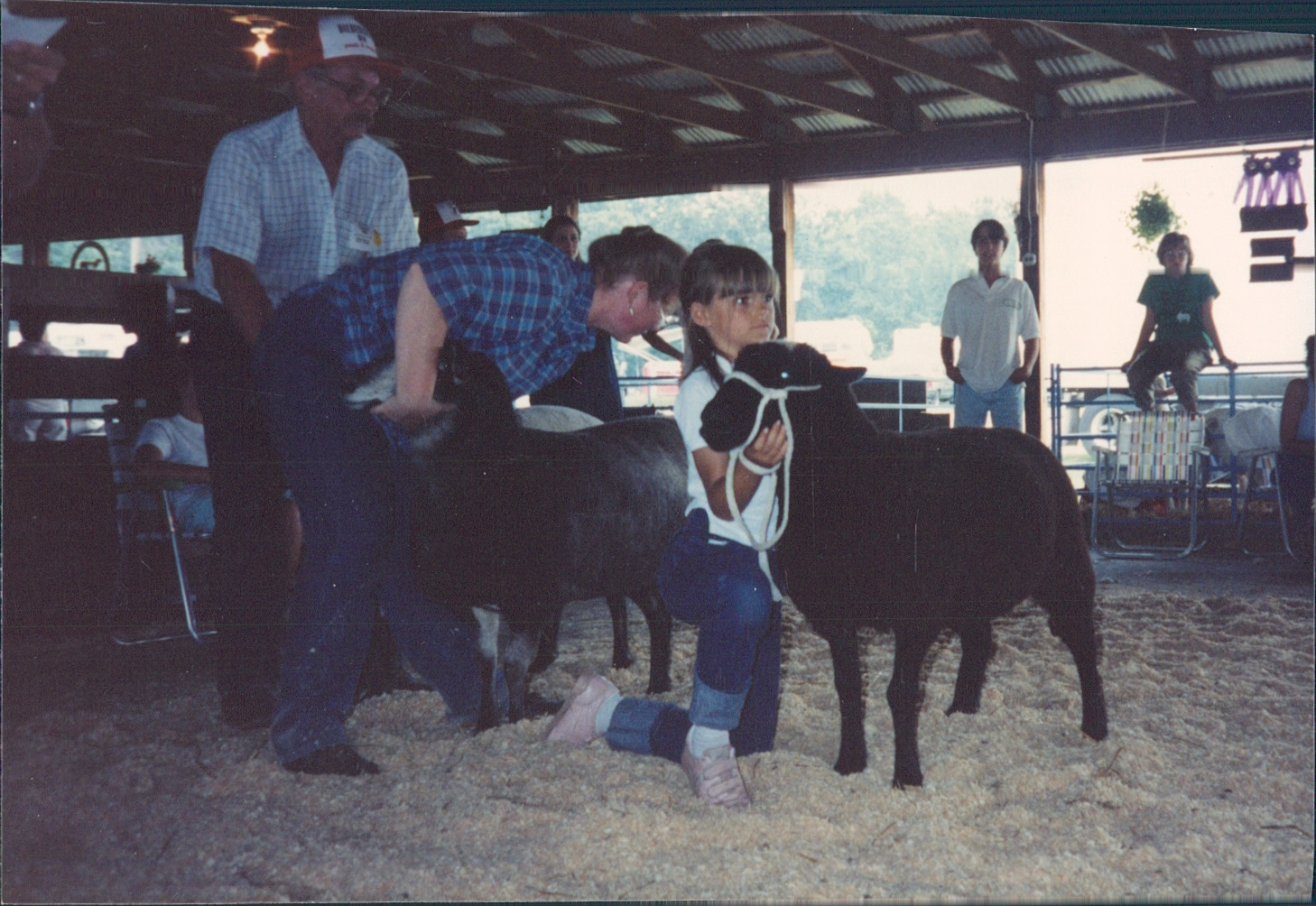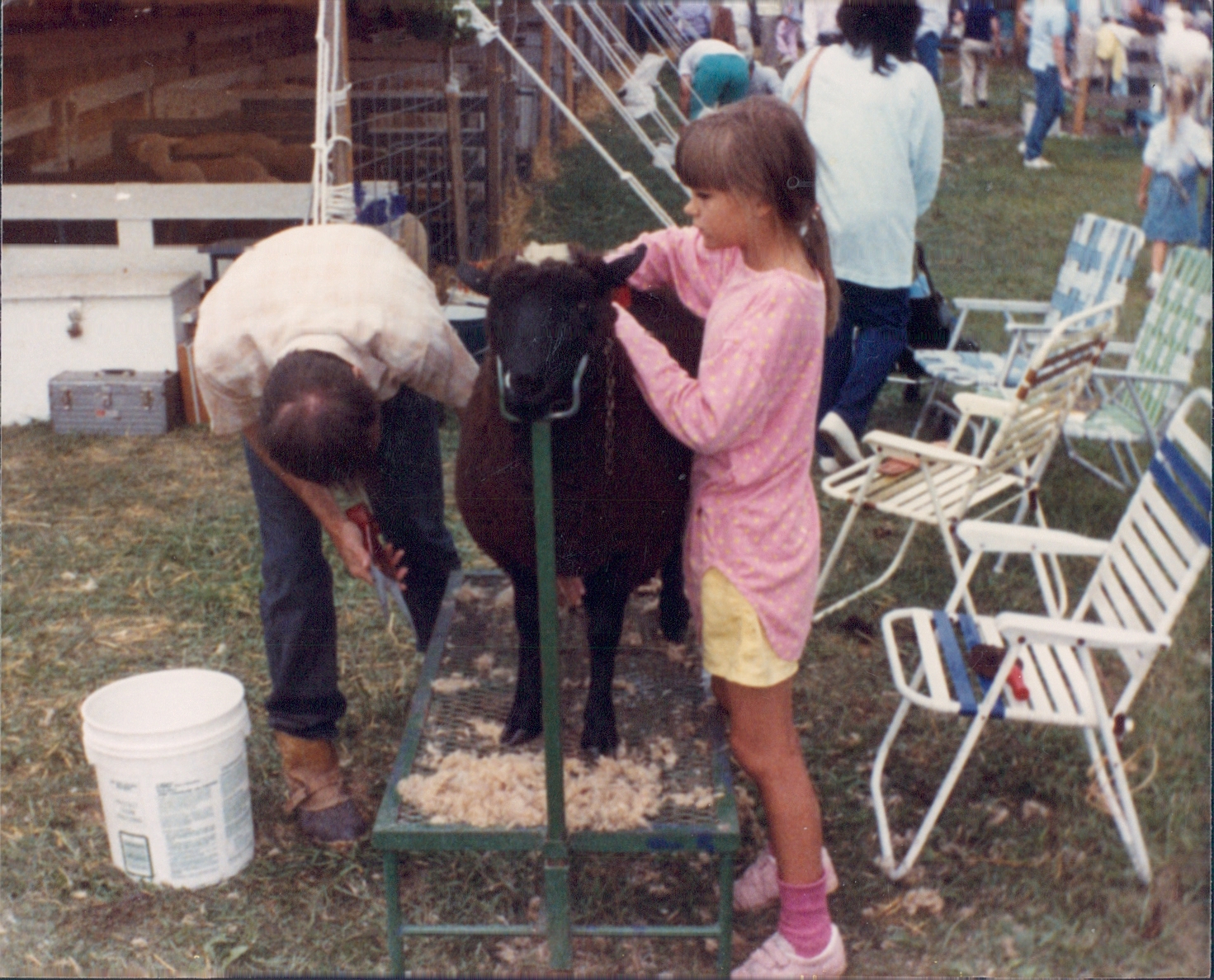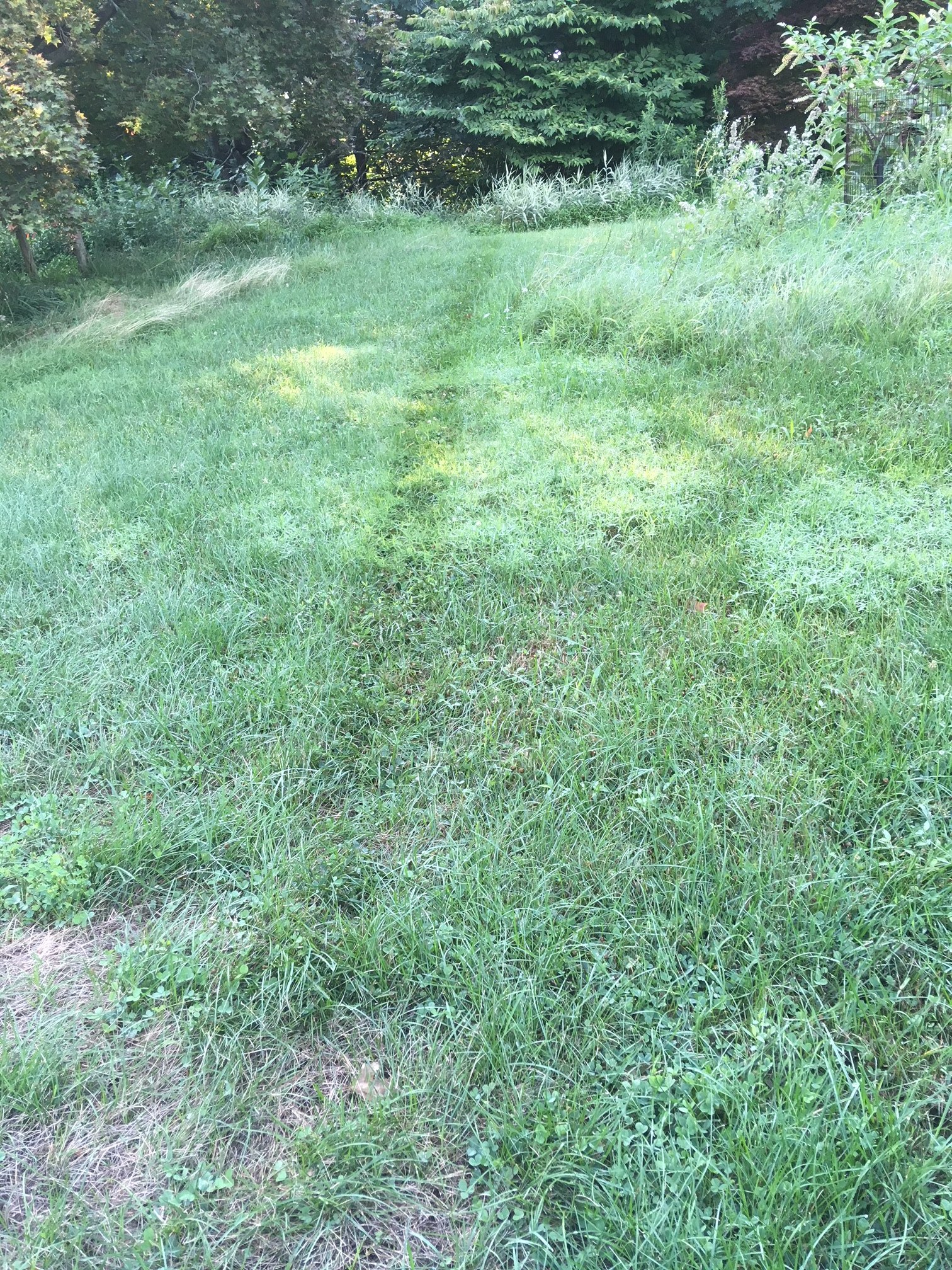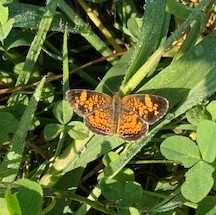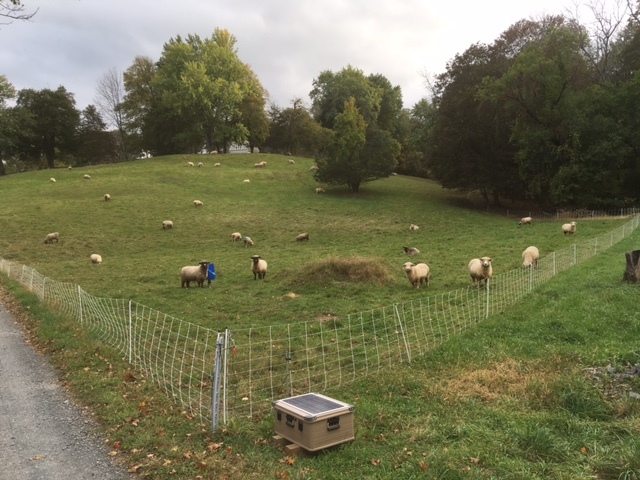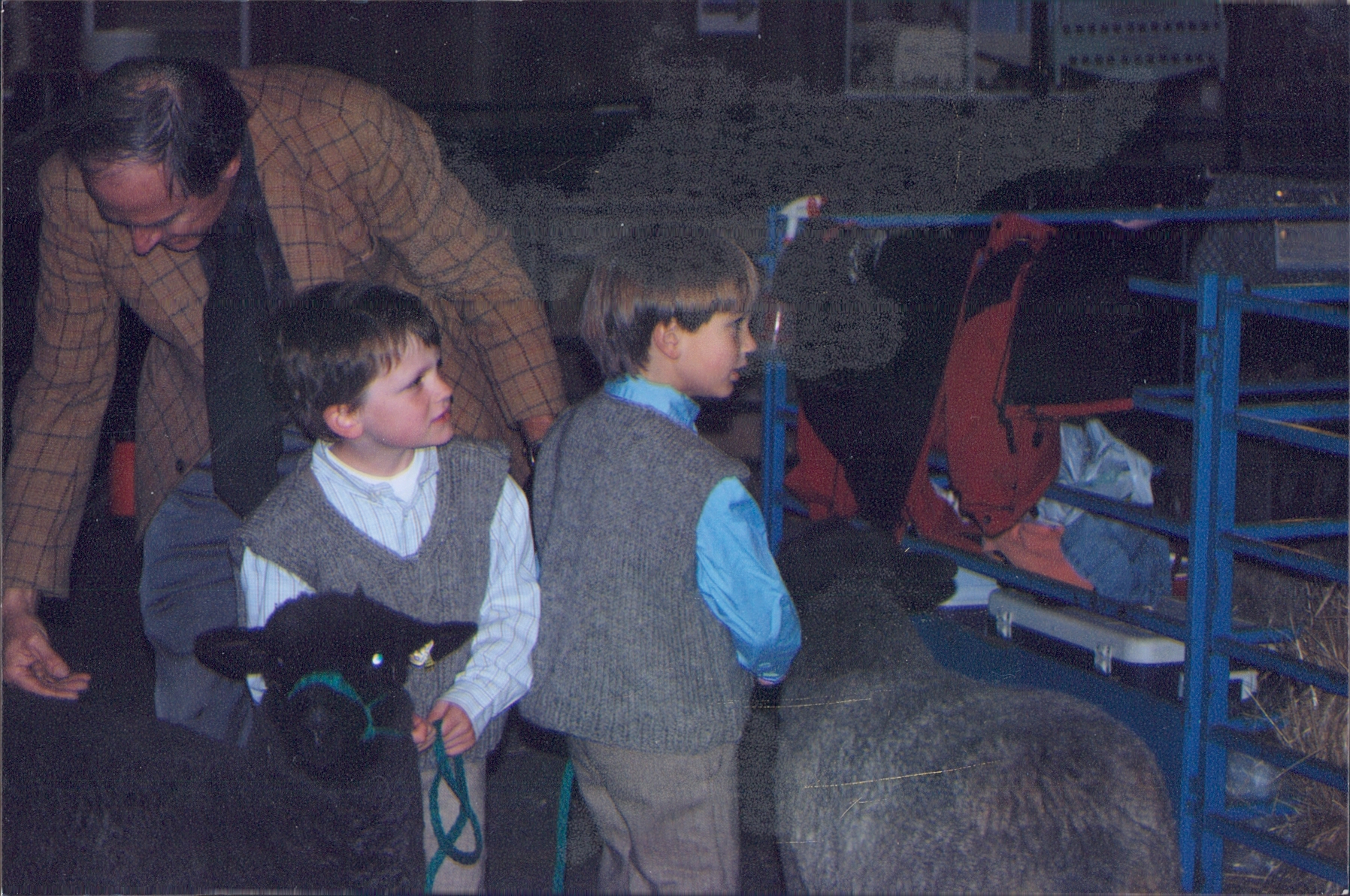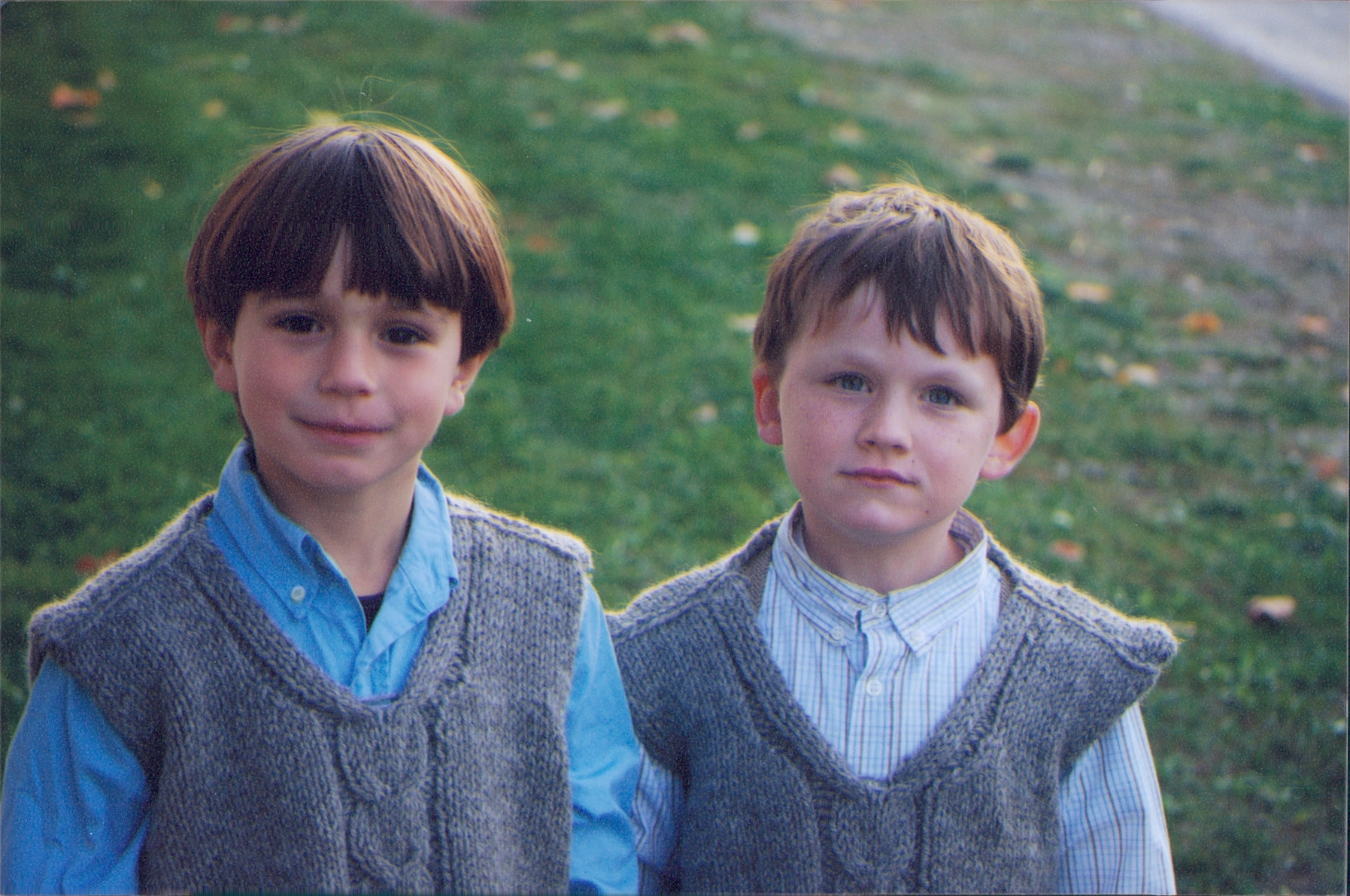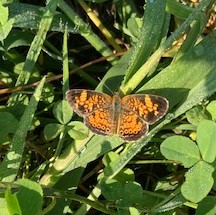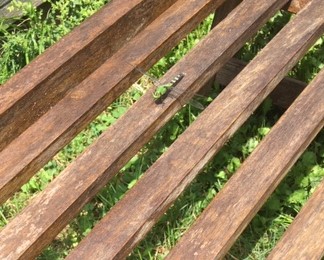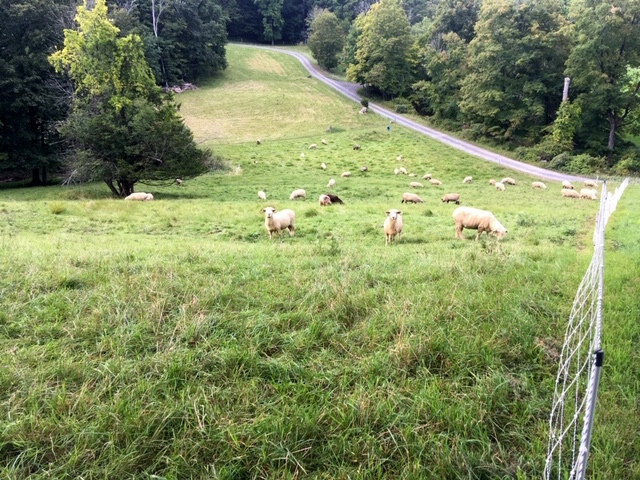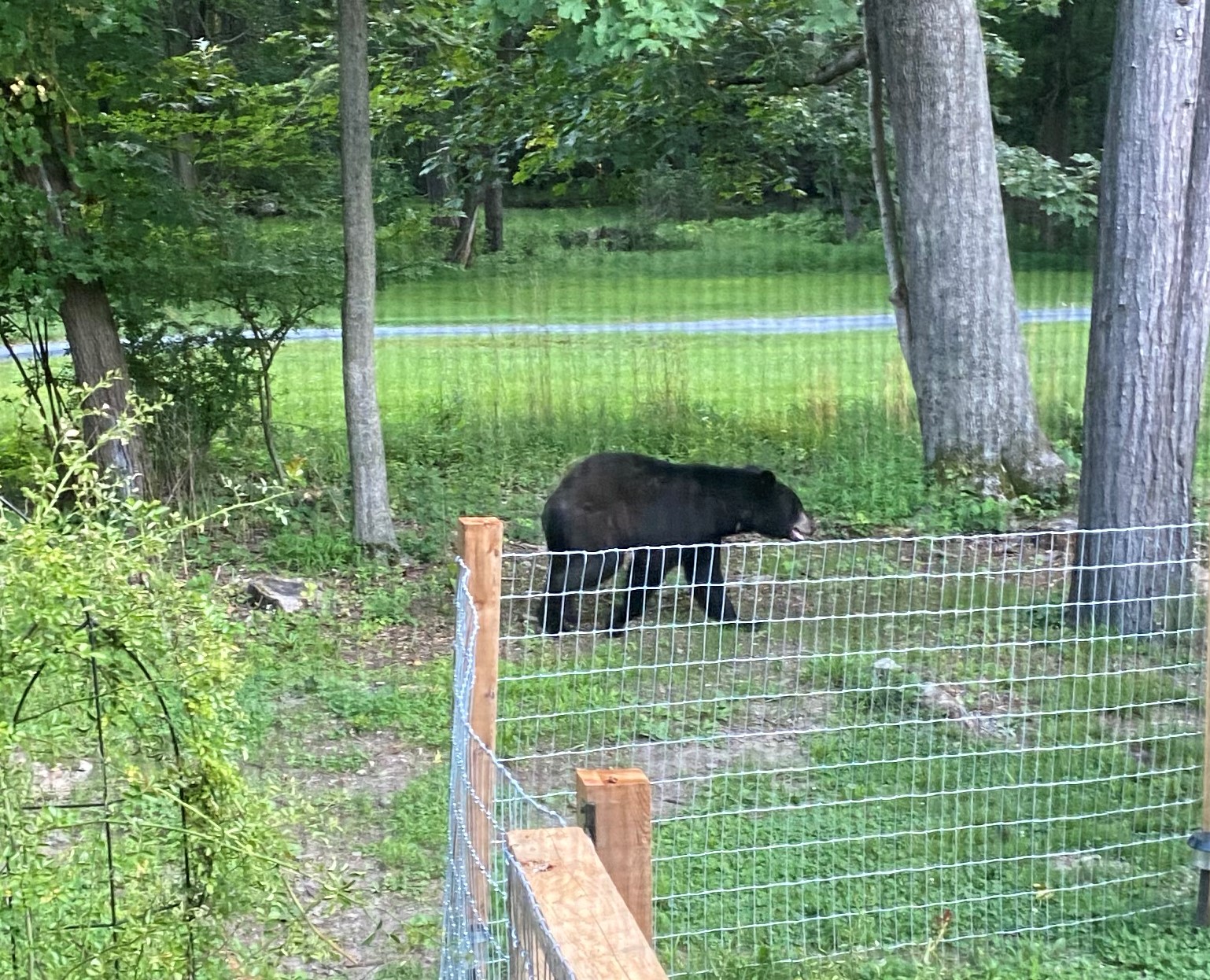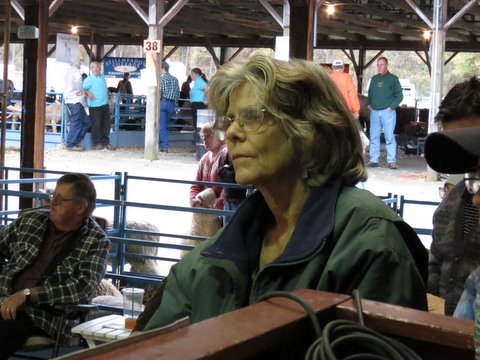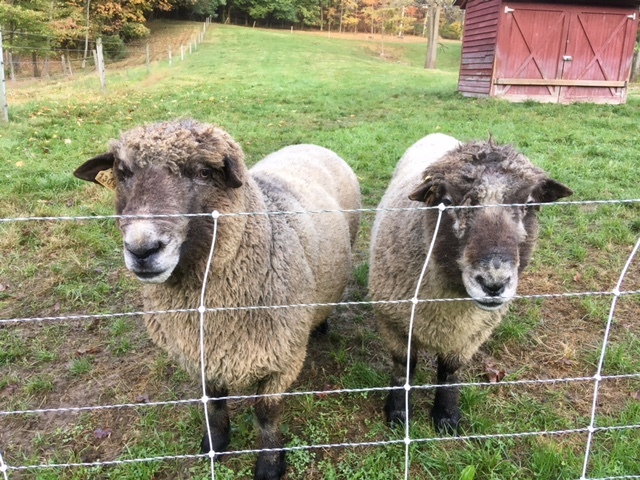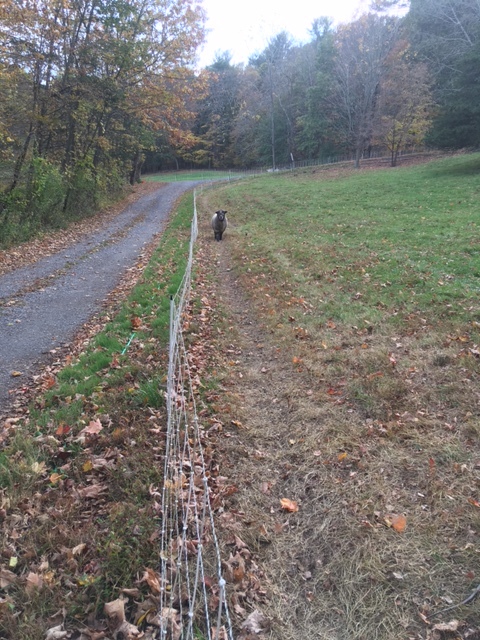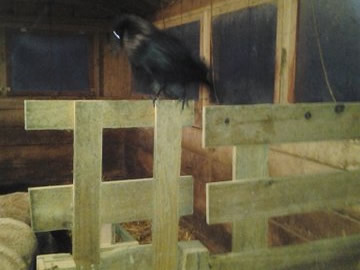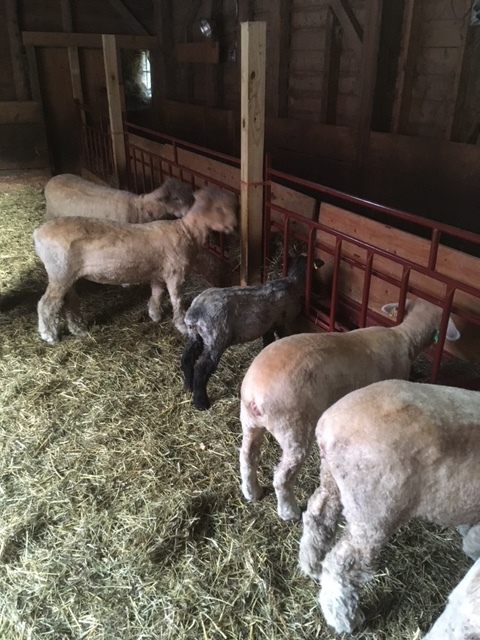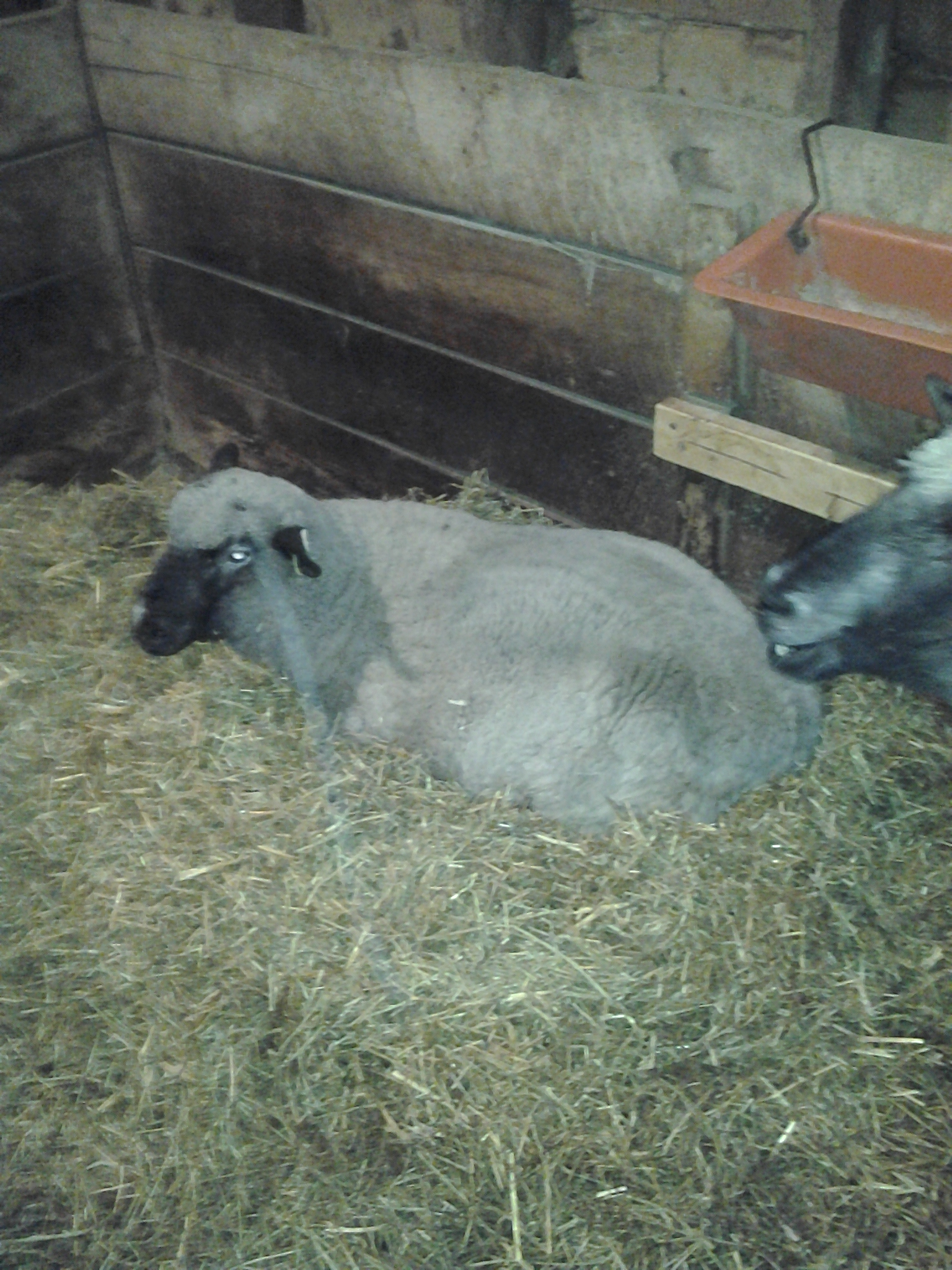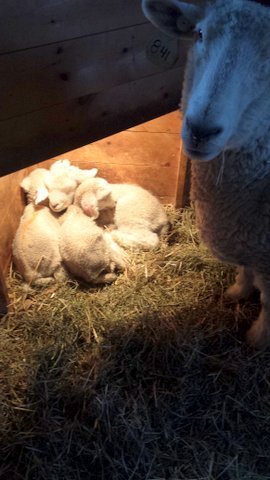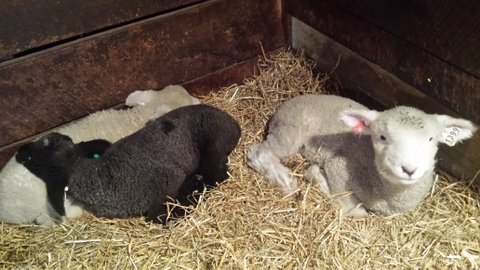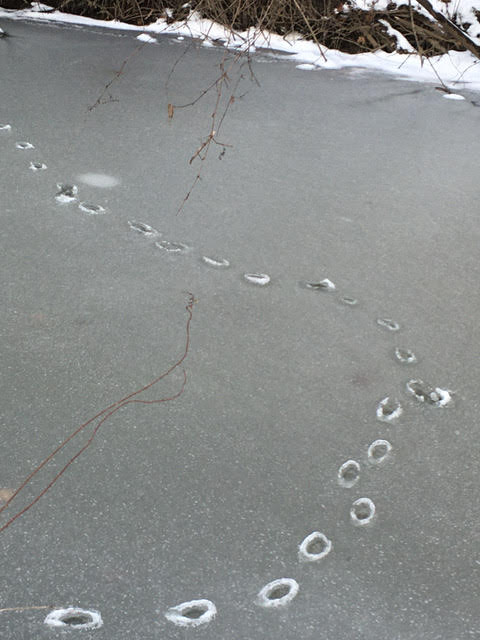For Sale
As of April 4, 2024 we’ve completed lambing, with one older recessive ewe having brought forth a white lamb by a white cleanup ram ten days later than everybody else. 30/31 ewes put to the rams came to term. One older ewe never caught.
As prospects to buy, we have lambs both white and colored; also three natural-colored extension dominant yearlings of our breeding and a two-year old natural-colored extension-dominant Pitchfork ram 1202. He being their sire, we won’t put them to him. He will do a lot of good at another place. The three yearlings, this year’s extension dominant lambs (three ewes) and their sire are all for sale. Pitchfork Ranch 1202-22 is pictured below, photographed free-standing in the barn.
His three daughters born 2023 are shown below.
We also have three extension-dominant natural-colored ewe lambs with no spotting. Below is 1952/24 Tw aged two weeks.
Other lambs here now that could also be great additions to your purebred flock are among those in a bumper crop of twenty thriving agouti-recessive natural-colored lambs . You can read more about them on the recessive color tab.
Regarding white lambs Caution: All our white (18) lambs this year will require a BW affix on their ARBA number if registered, because their sire, Anchorage 1856/22 has a BW. This does not mean that a lamb of his “carries recessive color” due to a color allele (“gene”) at the agouti locus on chromosome 13, but there is a chance of that. Accordingly, lambs who have a BW affix because there’s a known agouti recessive ancestor fit best in a breeding program that actively wants “recessive color,” or at least would not mind if it popped up unexpectedly.
Tradition says a black spot on a white sheep’s body means the animal has a single unpaired color allele at that key locus. That lore is hard to prove or disprove. For this reason, programs that abhor a black spot on a white sheep or don’t want a surprise colored lamb from white parents should be chary of BW that’s traceable to a recessively-colored ancestor, as are all of our BWs now.
In previous years we had never used a white ram with a BW affix, though we had used a white ram with an undetected, single, recessive color allele at the agouti locus; that is, an “undesignated color carrier.” In fall 2023, however, the mature white ram from Oregon whom we had planned to use died suddenly, making us go with a resident white ram of our breeding (1856/22) whose white dam (born 2018) had been sired on a white dam (1573/18) by that previously unrecognized color- carrier. That parentage conferred a BW on her and on all her progeny and their progeny. Probabilistically, there is a 50% chance that the 2018 ewe is a color carrier. If she is, there’s a 50% chance that her son is, too; if she isn’t (but we don’t know) there’s no chance he is.
“BW” can be in the ARBA registration number for another reason, however, with very different implications for the perpetuation of “color.” A colored sheep in the ancestry of a Romney need not have been recessively-colored. That ancestor could have got its color from having a dominant color allele at another place in the genome, the extension locus. White offspring of an extension-dominant parent have not inherited that color allele; it’s gone for good from their genetic makeup and from that of their descendants, but ARBA rules decree that all BW affixes, regardless of origin, must stick generation after generation. Overall, I think that ‘s a good idea though confusing.
For the last thirty years or so, most natural-colored Romneys in shows (and, I would venture, all of them in the majors) have a dominant color allele at the extension locus. This observation is offered without judgement or explanation here.
In summary, BW is not a mark of Cain nor a scarlet letter; it can be a tipoff to the possibility of a recessive allele at agouti, which some Romney breeders seek and others shun.
Please note that in 2024, for the first time ever, we plan to let all our lambs wean themselves while on pasture with their mothers. Consequently, no lambs will be ready to leave until much later than previously, probably around mid-June at the earliest. If you are interested in choosing a lamb, either white or colored, from us this year, it would be advisable to visit here before about April 28 when they can still be seen and handled in the barn before going to pasture. If you’d like to come later, we can still bring them in (but it’s more work for us). You’d have to know you that in either case you couldn’t take him or her or them home until June, although you could reserve sooner for subsequent pickup.
Our esteemed manager, Graeme Stewart, retired as of May 1, 2023. Inquiries should go to Graeme’s successor, Cameron Pedigo, at 845 217 1974. We’re privileged that Graeme is continuing to advise us on which sheep will be best for each one of our established, and our new, buyers.
**********************************************************************************************************************************************************************************
